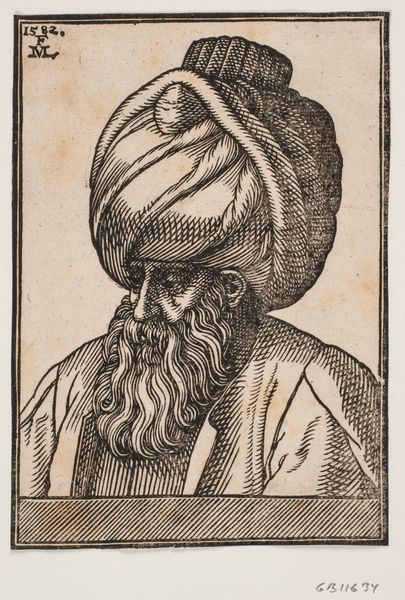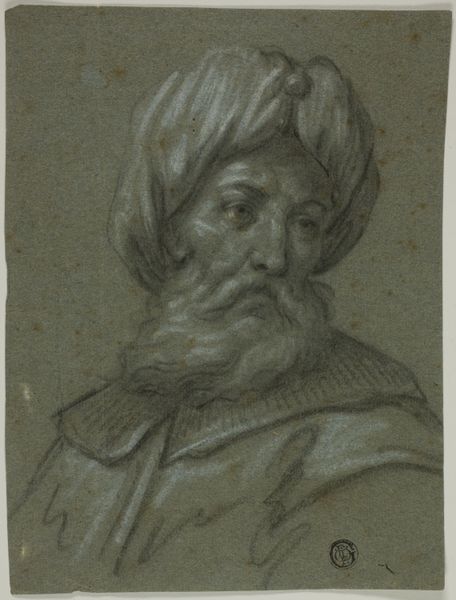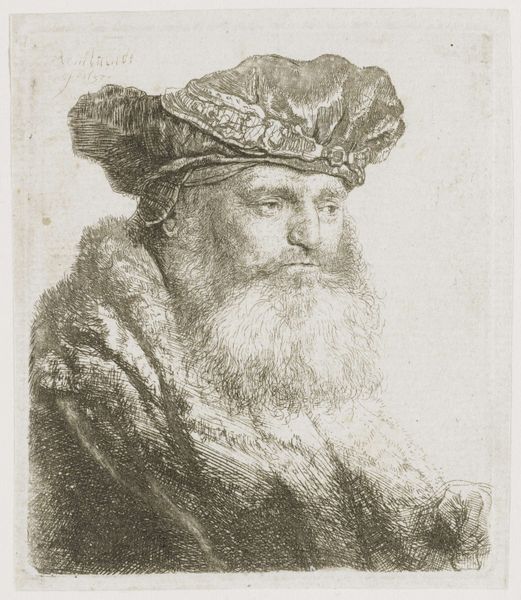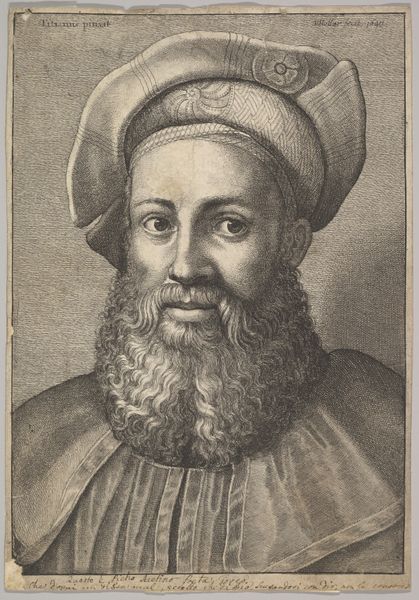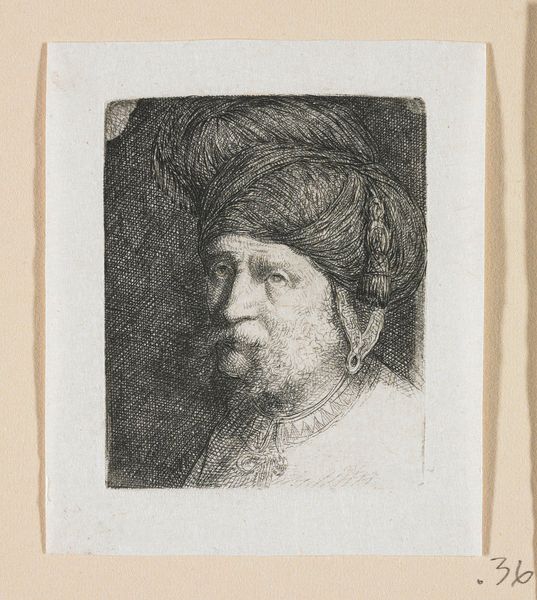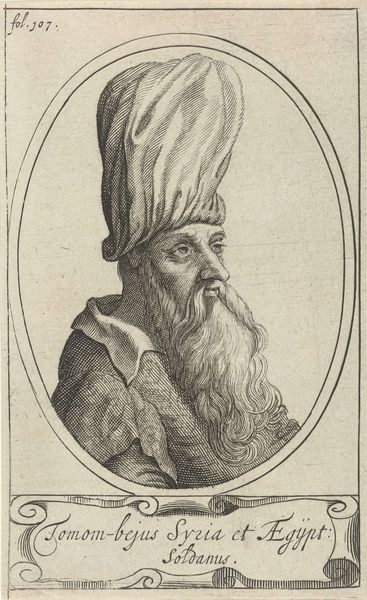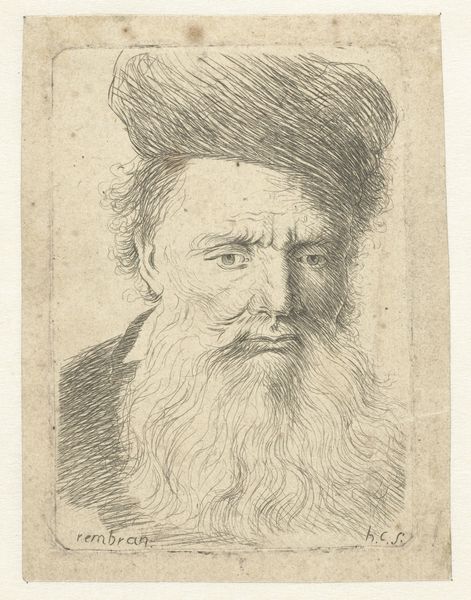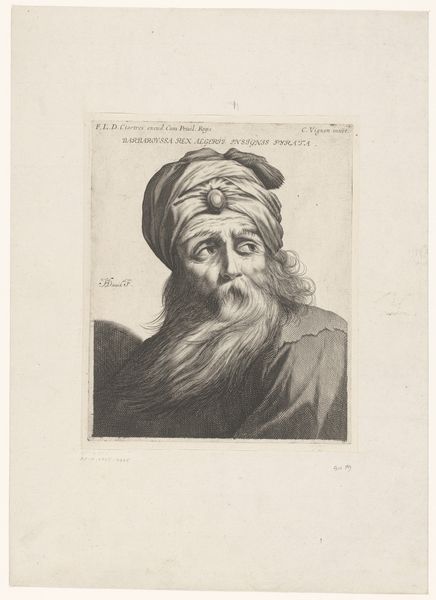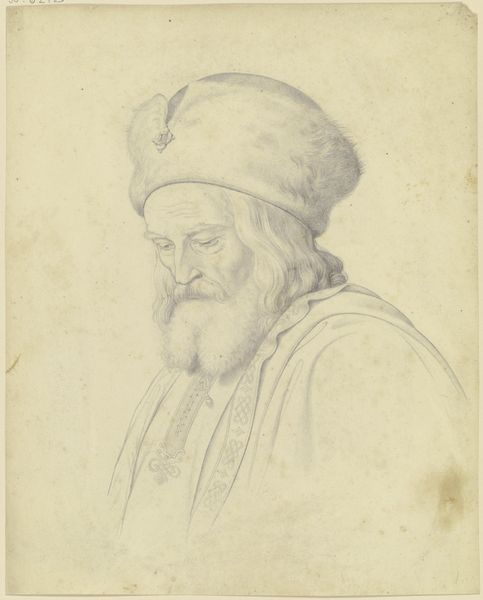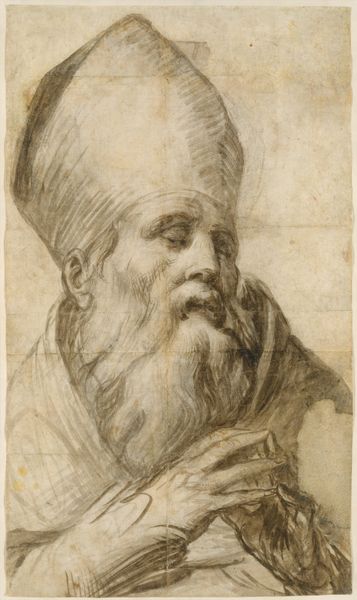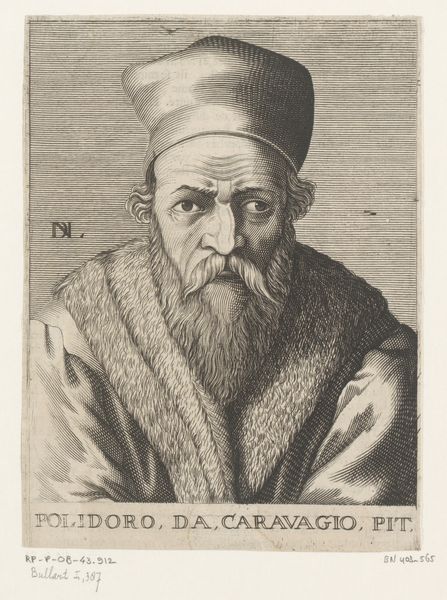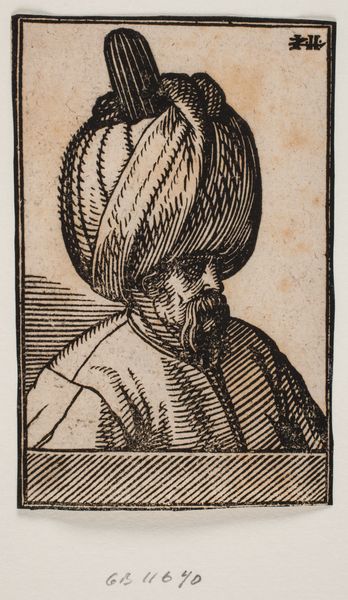
Head of an Elderly Man with a Long Beard and Turban 1435 - 1503
0:00
0:00
drawing, print, engraving
#
portrait
#
pencil drawn
#
drawing
#
facial expression drawing
#
light pencil work
#
medieval
#
head
# print
#
pencil sketch
#
old engraving style
#
portrait reference
#
pencil drawing
#
pen-ink sketch
#
men
#
portrait drawing
#
pencil work
#
northern-renaissance
#
engraving
Dimensions: Sheet: 7 11/16 × 4 7/8 in. (19.5 × 12.4 cm)
Copyright: Public Domain
Curator: Here we have "Head of an Elderly Man with a Long Beard and Turban" by Israhel van Meckenem, an engraving dating from around 1435 to 1503. It's currently held at the Metropolitan Museum of Art. Editor: My first impression is of striking detail; the texture of the beard alone is captivating. There's an intensity in his gaze, a life lived etched onto his face. Curator: Meckenem, a prolific printmaker in the late 15th century, often depicted biblical figures or scenes of daily life. It's important to remember that printmaking allowed for a democratization of imagery. These weren't singular, expensive paintings but reproducible images for a growing urban population. Editor: The turban, to me, suggests a connection to the exotic, the 'other.' Head coverings often signal identity and belonging, but also potential barriers or divisions in early portraiture. Curator: Precisely. The turban marks him out, places him outside of typical Northern European society. It's interesting how Meckenem depicts this figure—whether it's from life, imagination, or inspired by imported textiles, the image speaks to a burgeoning curiosity about other cultures. Editor: The flowing beard and the intricately detailed turban are visual cues that denote wisdom and possibly status. The beard, of course, has historically symbolized masculinity and virility, while head coverings imply social standing and often spiritual dedication. The lines are delicate and convey deep thoughtfulness. Curator: And it raises questions about how individuals outside the dominant Christian European culture were perceived and portrayed during the late medieval and early Renaissance period. How much is accurate observation, and how much is artistic license colored by societal perceptions? Editor: Exactly. It's an engaging dance between accurate depiction and symbolic representation, isn't it? His gaze, weary and knowing, perhaps reflects the complexities of that intersection. Curator: Reflecting on this work, it underscores how prints played a crucial role in circulating images and shaping cultural understanding during a transformative period in European history. Editor: I agree, and the longevity of symbols—like the beard or turban—reveals that our understanding of cultural imagery constantly builds on historical interpretations.
Comments
No comments
Be the first to comment and join the conversation on the ultimate creative platform.
